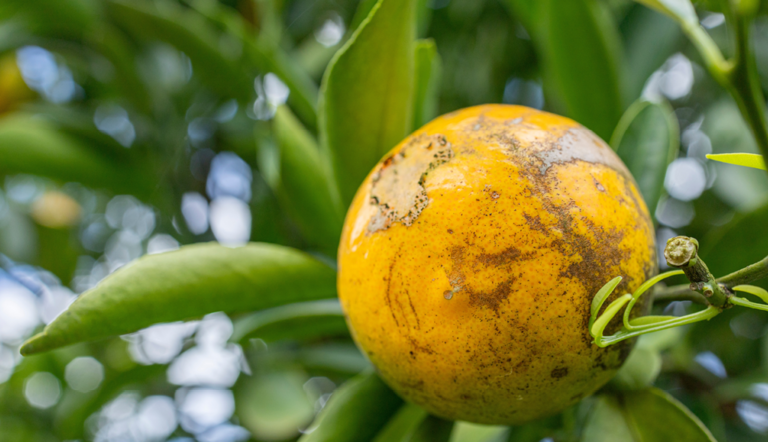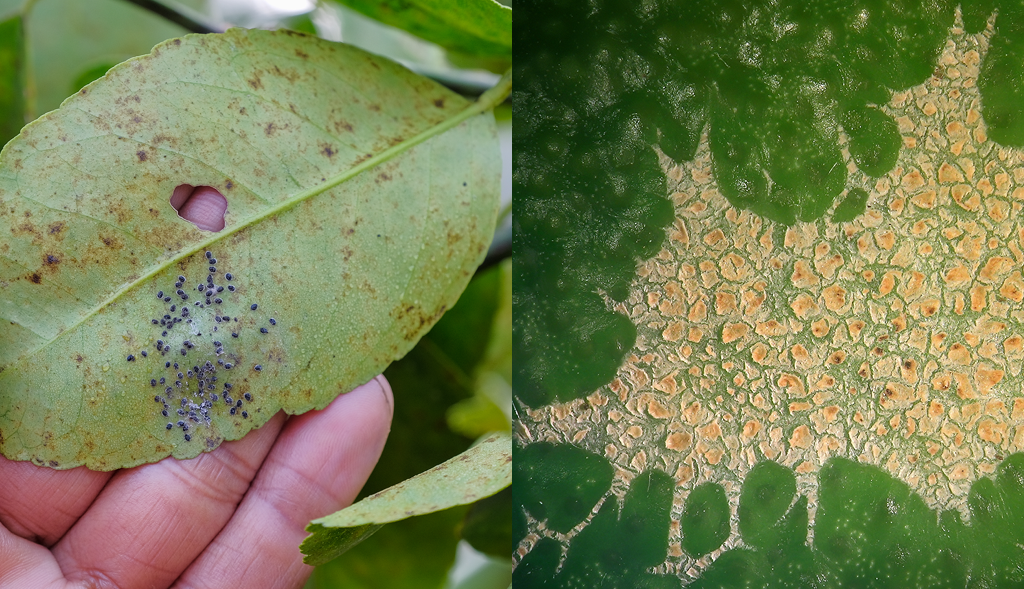
Controlling Citrus Thrips in South Africa

Citrus thrips control, specifically control of Scirtothrips aurantii (South African citrus thrips), is important as this pest is a significant threat to citrus crops in Southern Africa. In this article we take a deeper look at these insects and citrus thrips treatment, including citrus thrips chemical control.
Thrips form part of the order Thysanoptera (meaning fringed wings, which includes more than 6 000 species). While most are harmless, some are predatory and some can cause problems in horticulture and agriculture, damaging fruit and reducing crop yields.
While thrips occurs in various parts of the world, the Scirtothrips aurantii subspecies is indigenous. Although usually considered to be associated with citrus, it has been found on more than fifty plant species across a wide range of different plant families. For example, in South Africa, citrus thrips has been known to infest mangoes planted in close proximity to citrus trees. Thrips appear to be most attracted to plants with aromatic oils and terpenoids.
The pest can affect the flowering, fruiting and vegetative growing stages of citrus trees. Citrus thrips larvae and adults feed on young leaves and fruit, but cannot survive on hard or mature foliage. They feed most frequently in the folds of leaves or beneath the calyx of developing fruit.
What damage do citrus thrips cause?
Damage to a fruit infested with citrus thrips may begin with a silver-white blemish near the calyx that becomes brown as the fruit is exposed to the sun. After petal fall, severe scarring of the fruit can occur with the damage resembling scribbling, before finally appearing as stippling or turning russet when the fruit is mature. A citrus thrips infestation in a young citrus plant can lead to severe stunting due to foliage damage.
In South Africa and Zimbabwe, the pest causes reduction in citrus yields due to serious damage to young leaves, and reduces the proportion of export-quality fruits. It is a significantly serious pest at low altitudes.
Protecting citrus trees from Scirtothrips aurantii (citrus thrips)
Most natural enemies of Scirtothrips aurantii are predators, mostly mites of the subfamily Amblyseiinae. Scirtothrips aurantii managed using chemical control, field monitoring in high risk areas, biological control and phytosanitary methods that can be implemented separately or in conjunction with one another.
ADAMA’s Klartan® 240 EW is an effective pesticide for dealing with citrus thrips. It can be used in conjunction with insecticides from different group codes to mitigate the risks of resistance occurring. While it is not toxic to bees, it should not be sprayed when bees are in the vicinity.
What is Klartan® 240 EW?
Klartan® 240 EW is a stomach and contact insecticide emulsion for the control of pests in a variety of fruits, including citrus. The product can be used together with several other pest control measures and can be administered by conventional spraying equipment. It is always prudent to check with the manufacturer before combining the product with any other chemical pest control measures.
A higher rate application can be applied at 70-90% petal drop stage, with a second, lower rate application 4 to 5 weeks later if necessary. The product should, however, not be used in areas with known or likely pyrethroid resistance of thrips. A withholding period of at least 43 days is recommended when used on citrus trees.
Find out how farmers are predicting citrus yields by using drones.
Always read the warnings and directions on the label and follow these with care. Alternatively, contact your ADAMA field team for more information.
Klartan® 240 EW - Active ingredient: tau-fluvalinate (pyrethroid)
Registration number L5096 referencing Act/Wet 36 of/van 1947
Address of Registration holder: 99 Jip de Jager Drive, The Vineyards Office Estate, Simeka House, De Bron 7530, South Africa
CAUTION: Keep out of reach of children. Take precautions and avoid skin contact. This product is very toxic to aquatic life, with long-lasting effects. Avoid release to the environment. Collect spillage. Dispose of contents/container at an approved waste disposal plant.
